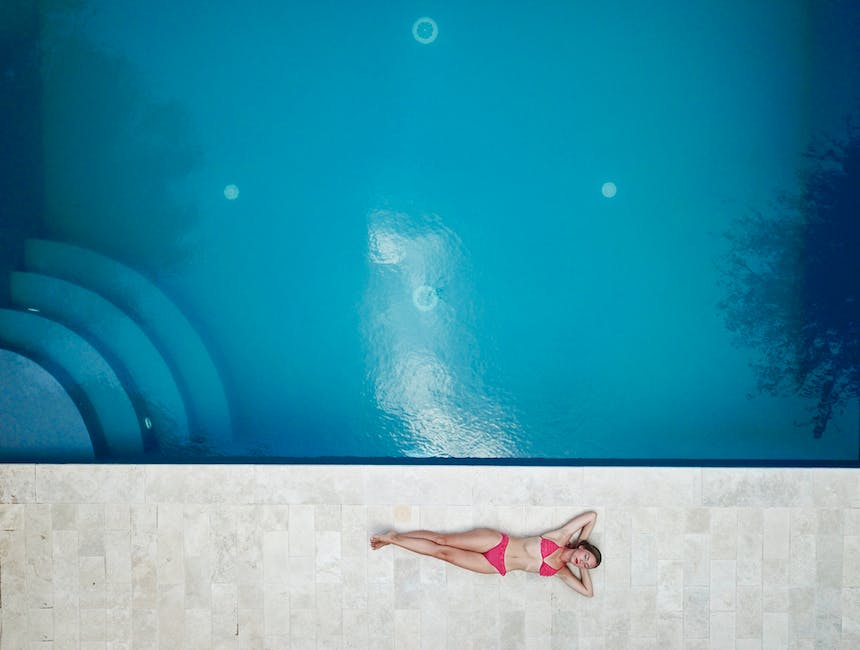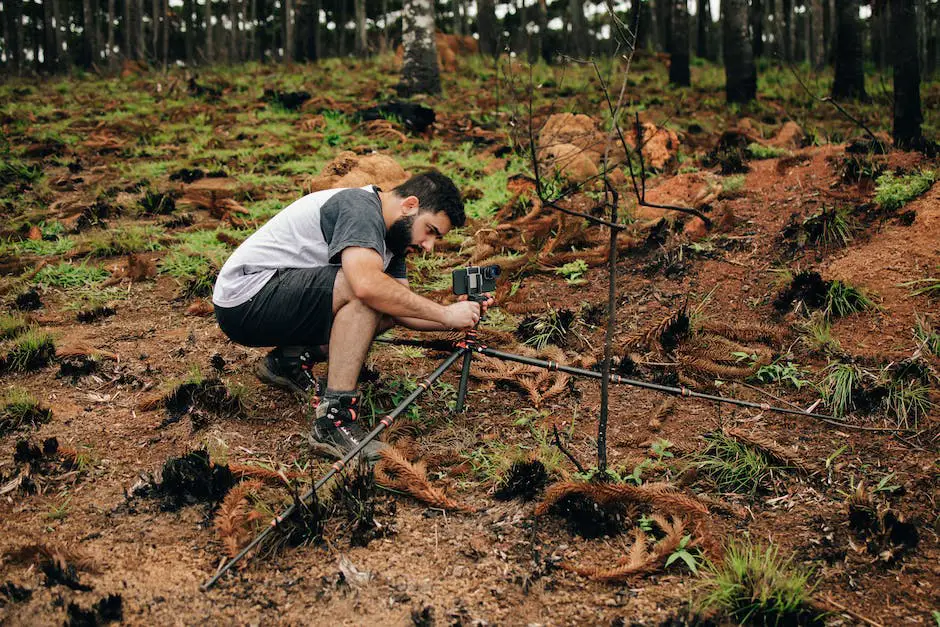As the summertime heat approaches, the allure of a sparkling, cool swimming pool in your backyard becomes increasingly enticing. The thought of installing an above ground pool, however, can be seemingly overwhelming. No need to worry as this guide serves to illuminate the process, making it understandable, even for a novice. Dive into this comprehensive explanation that steers you through selecting optimal pool location and type, understanding the step-by-step installation process, as well as grasping the basics of pool maintenance practices. With this guide, even the most intriguing aspects of pool ownership, from placement and installation to ongoing upkeep, become manageable and clear.
Choosing Location & Pool Type
Understanding Local Codes and Ground Level
The first step in installing an above ground pool is choosing the right location. This should be in accordance with local building and zoning codes which can vary from one region to another. It’s important to understand and comply with these codes to prevent fines or having to relocate the pool. A call to your local administration should provide you with the necessary information.
After ensuring compliance with local codes, the ground level at the location is the next significant consideration. Above ground pools need a flat and sturdy surface. Not leveling the ground can result in an uneven pool, potentially damaging the structure.
Considering Sunlight Exposure and Utility Lines
Sunlight exposure plays a crucial role in your pool installation. A location with more exposure to sunlight will naturally warm the water and provide a more pleasant swimming experience. However, excessive sun could also lead to quick evaporation and frequent refills. Strike a balance between shade and sun for the best results.
In relation to utility lines, you’ll want to ensure your pool is installed away from any underground or overhead lines to avoid potential accidents or restrictions as stipulated by local authorities. Keep a safe distance from septic tanks, buried gas or oil tanks, and electrical lines.
Different Types of Above Ground Pools
Above ground pools come in a variety of sizes, materials, and styles to suit different preferences and budgets.
- Resin pools: Resistant to rust and corrosion, are generally more expensive but offer durability. They are less likely to get hot under intense sunlight.
- Steel pools: Sturdy and cost-effective, but they may rust or corrode over time if not adequately cared for.
- Aluminum pools: Lightweight, resistant to rust, and easy to install but are more prone to damage such as dents and punctures.
- Hybrid pools: Combine the benefits of resin and steel pools, offering both durability and affordability.
Once you’ve evaluated your options and chosen a type that suits your space and budget, you can proceed with the purchase and installation process. Remember, it’s important to make these decisions in a thoughtful and informed manner to ensure a satisfactory outcome.

Can I Use the Pool Maintenance Guide for an Above Ground Pool Installation?
Yes, you can definitely use the beginner’s guide to pool maintenance for an above ground pool installation. While there may be some specific differences in terms of equipment or procedures, much of the information provided in the guide will still be applicable. It will give you a solid foundation on how to care for your pool properly, ensuring its longevity and enjoyment.
Pool Installation Process
Step 1: Level the Ground
Before you begin the installation process, ensure the ground where the pool will be located is level. This may involve removing any grass or stones and adding sand to create a level surface. A transit level, available from your local home improvement store, can assist you in this process. This leveling is crucial because if the pool is not level, it can lead to a pool collapse.
Step 2: Place the Bottom Rails
Once the ground is level, place the bottom rails according to the manufacturer’s specifications. These rails serve as the framework for your pool, so it’s important to place them accurately.
Step 3: Install the Pool Wall
After the bottom rails are in place, install the pool wall. Follow the manufacturer’s instructions closely to ensure all components are connected correctly. During this process, it can be useful to have a helper to hold the wall as you connect the components.
Step 4: Place the Liner
The pool liner not only adds to the aesthetic of your pool but also helps keep the water inside. Carefully unfold the liner and place it inside the pool structure allowing some overlap on the sides. Ensure no objects with sharp edges are left underneath or on the liner, which might cause a tear. Drag out any wrinkles for a smooth pool floor.
Step 5: Assemble the Structure
Once the wall and liner are in place, it’s time to assemble the rest of the structure. This involves installing the top plates, top rims, and uprights, again following the manufacturer’s instructions. Be aware that each pool model may have slightly different construction elements, so always refer to your specific pool’s manual.
Step 6: Fill the Pool
After you’ve completed the assembly of your pool, begin filling it with water. It’s recommended to fill slowly and observe how the liner and pool walls react. Once full, keep an eye on your pool for the first few days to ensure there are no leaks or other issues.

Can the Installation Steps for an Inground Pool be Adapted for an Above Ground Pool?
Yes, the installation steps for an inground pool can be adapted for an above ground pool. The process of installing inground pool steps can still be applied, with some adjustments to account for the differences in the pool structures. It is important to follow the specific instructions for each type of pool.
Pool Maintenance
Understanding Pool Chemistry: The Importance of pH Levels
The pH level of your pool water is crucial to maintain, as it helps to prevent the growth of bacteria and algae. It is recommended that the pH level of pool water be kept between 7.2 and 7.8 – this range not only provides optimal comfort for swimmers, but also ensures that the pool sanitizers work effectively. Too low a pH level will lead to corrosive water that damages pool equipment and irritates skin and eyes, while too high a pH level can cause scale formation and cloudy water.
The Role of Pool Sanitizers
Pool sanitizers are the chemical substances that are used to kill bacteria and prevent the growth of viruses, algae, and other biological contaminants in the pool water. The main types of pool sanitizers are chlorine and bromine. The right choice of sanitizer depends on a variety of factors including the pool size, the pool’s exposure to sunlight, and the frequency of pool use. Always ensure to follow the manufacturer’s instructions when adding sanitizers to your pool to ensure safety and effectiveness.
Treating the Pool Water with Pool Shock
Pool shock refers to the process of adding chemicals to your pool in order to quickly raise the chlorine level, killing bacteria and algae. It’s recommended to shock your pool once a week to maintain a clean and clear water. The process involves adding a large amount of free (unstabilized) chlorine to the water to eliminate contaminants. You should do this at dusk or at night when the sun is not up to prevent the UV rays from breaking down the chlorine.
Running the Pool Filtration System
Your pool’s filtration system plays a crucial role in maintaining the clarity and cleanliness of the water. Under normal conditions, you should run your filtration system for about 8-10 hours a day. The system works by circulating the water and removing debris. This process also disperses pool chemicals evenly throughout the water. Keep in mind the filters require regular cleaning and replacing to continue functioning effectively.
The Importance of Regular Pool Maintenance
Regular pool maintenance is critical not only for the clarity of water but also for swimmers’ health. The complexity of maintenance procedures can depend on the size and type of your pool, as well as on the intensity of use. Ideally, you should check the pool’s pH level and free chlorine level every day. Other maintenance tasks, such as cleaning pool walls, vacuuming the pool, and backwashing the filter, should be carried out as necessary. Remember, a well-maintained pool provides a safer and more enjoyable swimming experience.

Having delved into the nuances of above ground pool installation and maintenance, you now possess the knowledge to transform your mundane backyard into a personal oasis, all while ensuring its pristine condition for years to come. Remember to respect local codes when choosing your pool’s location, methodically follow the installation process, and most importantly, maintain your pool to safeguard its longevity and cleanliness. Building a swimming pool is not solely about securing a retreat from the heat, it’s about creating enduring family memories. With this newfound understanding, you can now, quite literally, take the plunge.
Writio: An AI content writer revolutionizing website publishing – Automate your content creation process effortlessly. This article was crafted by Writio.


